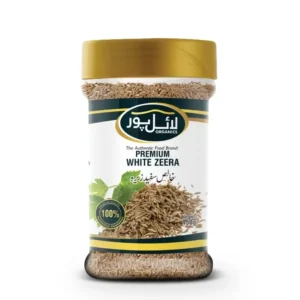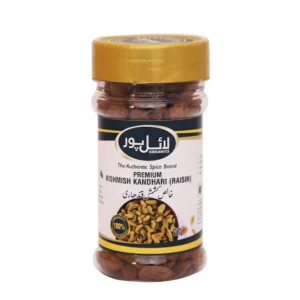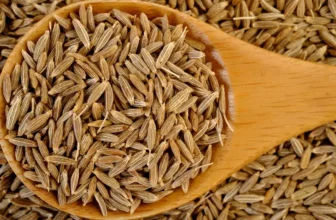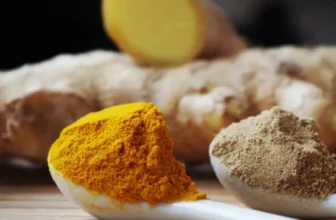A Comprehensive Guide to Harvesting Turmeric: Tips, Best Practices, and Utilization
Turmeric a vibrant yellow-orange root, has been a staple in Indian cuisine and medicine for thousands of years. Known for its potent anti-inflammatory and antioxidant properties, turmeric has gained global popularity as a superfood. However,Harvesting Turmeric requires an understanding of its growing cycle and best practices to ensure a bountiful yield.

Understanding the Turmeric Growth Cycle
In the ginger family, turmeric (Curcuma longa) is a perennial herbaceous plant. It thrives in warm, humid climates and requires a growing period of 8-10 months. The plant grows from rhizomes, which are underground stems. These rhizomes are the part of the plant harvested and used. This article will guide you through the essential steps and tips for turmeric harvesting.
Table of Contents
Stages of Growth

- Planting: Turmeric is typically planted at the beginning of the rainy season. The rhizomes are cut into smaller pieces, each containing at least one bud, and planted in well-drained soil.
- Vegetative Growth: During the initial stages, the plant focuses on developing its leaves and stems.
Preparing for Harvest
Before harvesting, it is crucial to prepare adequately to ensure a smooth and efficient process. Here are some preparatory steps:
- Soil Preparation: Ensure the soil is loose and well-drained to facilitate easy extraction of the rhizomes. If the soil is compact, consider loosening it with a fork or tiller.
- Watering: A few days before harvesting, water the plants generously. This softens the soil, making it easier to dig up rhizomes without damaging them.

Harvesting Turmeric
Harvesting turmeric involves several steps to ensure the rhizomes are extracted carefully and efficiently.
- Timing: Harvest turmeric when the leaves turn yellow and dry out. This typically occurs between 8-10 months after planting.
- Digging Up Rhizomes: Using a garden fork or spade, gently dig around the plant base to loosen the soil. Be careful not to damage the rhizomes. Once the soil is loose, lift the plant and shake off excess soil.
- Separating Rhizomes: Carefully separate the rhizomes from the plant. Use gloves to protect your hands from turmeric staining. Remove any remaining soil clinging to the rhizomes.
- Sorting and Cleaning: Sort the rhizomes by size and quality. Discard any that are damaged or diseased. Rinse the rhizomes thoroughly under running water to remove all soil and debris.
Post-harvest Processing
Proper post-harvest processing is crucial to ensure turmeric rhizome quality and longevity.
- Curing: After cleaning, allow the rhizomes to cure in the sun for a few days. This process hardens the skin, reducing mold and rot risk during storage.
- Boiling (Optional): Some farmers prefer to simmer the rhizomes before drying to enhance the color and flavor. If you choose to boil, do so for about 45 minutes to an hour, then let them dry.
Best Practices for Harvesting Turmeric
To maximize yield and maintain turmeric quality, consider the following best practices:
- Monitor Soil Health: Regularly check soil pH and nutrient levels. Turmeric prefers acidic to neutral soil (PH 5.5-7.0) rich in organic matter.
- Irrigation Management: Turmeric requires consistent moisture but waterlogging is susceptible. Implement a well-planned irrigation schedule to maintain soil moisture without overwatering.
- Pest and Disease Control: Keep an eye out for common pests and diseases, such as aphids, leaf spot, and rhizome rot. Manage these issues using organic pest control methods.
- Crop Rotation: Rotate crops to prevent soil degradation and pest and disease outbreaks. Avoid planting turmeric in the same spot year after year.
- Harvesting time: Timing is critical. Harvest too early, and the rhizomes may not be fully developed. Harvest too late, and they may deteriorate. Aim for the optimal harvest window when the leaves yellow.
Utilizing harvested turmeric
As soon as turmeric is harvested, it can be used in a variety of ways:
- Fresh: Fresh turmeric rhizomes can be used in cooking, juicing, or smoothies. They have a vibrant flavor and are rich in nutrients.
- Dried and Ground: Dried turmeric can be ground into turmeric powder, which is a staple spice in many cuisines. It can also be used in supplements and natural remedies.
- Turmeric Paste: Fresh or dried turmeric can be made into a paste for culinary or medicinal purposes.
- Essential Oil: Turmeric essential oil is extracted from the rhizomes and used in aromatherapy and topical applications.

Related Post
The Role of Turmeric in Traditional Chinese Medicine
Conclusion
Harvesting turmeric is a rewarding process that requires careful planning and execution. By understanding the growth cycle, preparing adequately, and following best practices, you can ensure a bountiful and high-quality turmeric harvest. Whether you are growing turmeric for personal use or commercial purposes, these tips and best practices will help you make the most of this golden spice.
Other Products by Lyallpur Organics
-
 Premium Crushed Red Chili (Crushed Lal Mirch, Darra Mirch) – 100% Natural & Pure | Super Spicy Flavour & Vibrant Color | Best Price in Pakistan₨ 219.00 – ₨ 780.00Price range: ₨ 219.00 through ₨ 780.00★★★★★
Premium Crushed Red Chili (Crushed Lal Mirch, Darra Mirch) – 100% Natural & Pure | Super Spicy Flavour & Vibrant Color | Best Price in Pakistan₨ 219.00 – ₨ 780.00Price range: ₨ 219.00 through ₨ 780.00★★★★★ -
 Premium Black Cumin (Kala Zeera) – 100% Natural Organic & Pure | Intense Flavour & Rich Aroma | Best Price in Pakistan₨ 373.00 – ₨ 860.00Price range: ₨ 373.00 through ₨ 860.00★★★★★
Premium Black Cumin (Kala Zeera) – 100% Natural Organic & Pure | Intense Flavour & Rich Aroma | Best Price in Pakistan₨ 373.00 – ₨ 860.00Price range: ₨ 373.00 through ₨ 860.00★★★★★ -
 Premium Kishmish (Raisin) Sundarkhani – 100% Natural Organic & Pure | Rich in Nutrients & Sweet Flavour | Best Price in Pakistan₨ 281.00 – ₨ 410.00Price range: ₨ 281.00 through ₨ 410.00
Premium Kishmish (Raisin) Sundarkhani – 100% Natural Organic & Pure | Rich in Nutrients & Sweet Flavour | Best Price in Pakistan₨ 281.00 – ₨ 410.00Price range: ₨ 281.00 through ₨ 410.00 -
 Premium Red Chili Powder (Lal Mirch Powder) – 100% Natural & Pure | Hot Spicy Flavour & Vibrant Color | Best Price in Pakistan₨ 200.00 – ₨ 1,015.00Price range: ₨ 200.00 through ₨ 1,015.00
Premium Red Chili Powder (Lal Mirch Powder) – 100% Natural & Pure | Hot Spicy Flavour & Vibrant Color | Best Price in Pakistan₨ 200.00 – ₨ 1,015.00Price range: ₨ 200.00 through ₨ 1,015.00 -
 Premium White Cumin (Safaid Zeera) – 100% Natural Organic & Pure | Delicate Flavour & Rich Aroma | Best Price in Pakistan₨ 280.00 – ₨ 624.00Price range: ₨ 280.00 through ₨ 624.00
Premium White Cumin (Safaid Zeera) – 100% Natural Organic & Pure | Delicate Flavour & Rich Aroma | Best Price in Pakistan₨ 280.00 – ₨ 624.00Price range: ₨ 280.00 through ₨ 624.00 -
 Premium Kishmish (Raisin) Kandhari – 100% Natural & Pure | Rich in Nutrients & Sweet Flavour | Best Price in Pakistan₨ 200.00 – ₨ 260.00Price range: ₨ 200.00 through ₨ 260.00
Premium Kishmish (Raisin) Kandhari – 100% Natural & Pure | Rich in Nutrients & Sweet Flavour | Best Price in Pakistan₨ 200.00 – ₨ 260.00Price range: ₨ 200.00 through ₨ 260.00








